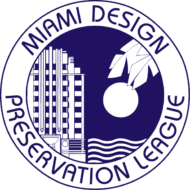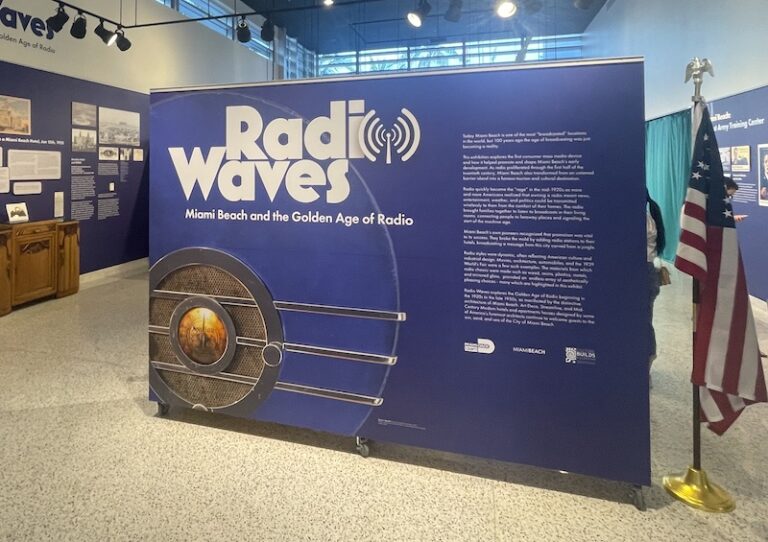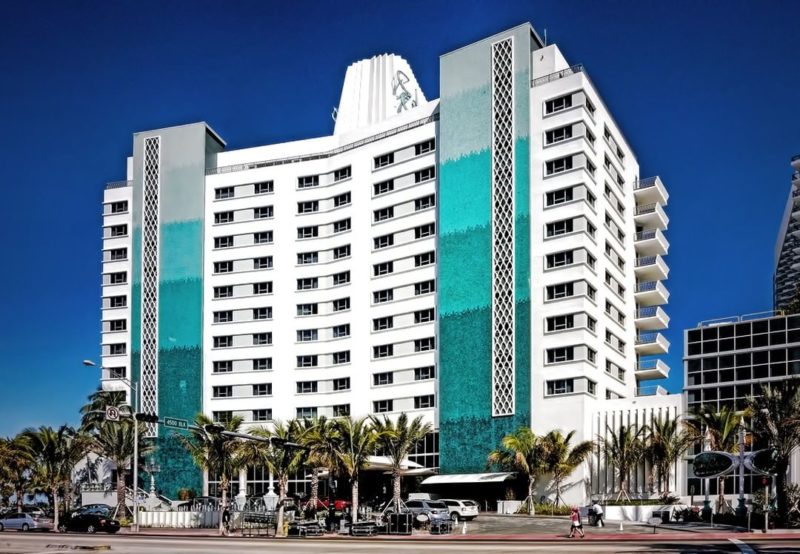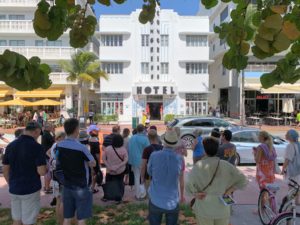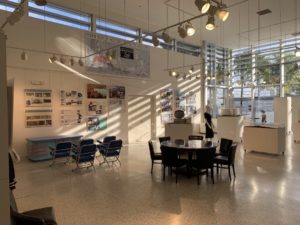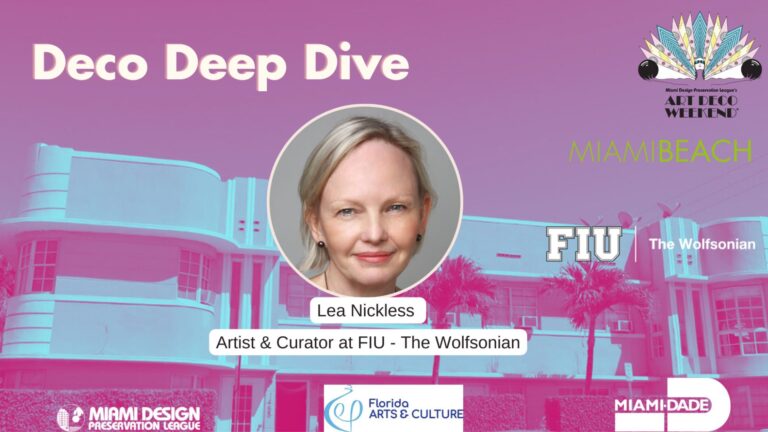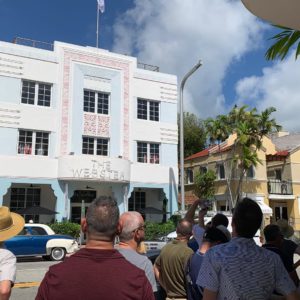Editors Note: The Barbara Baer Capitman archive’s “Historic Threads” project is partly sponsored by the Department of State, Division of Historical Resources and the State of Florida.
Miami Beach’s Lincoln Road Mall is one of the most popular shopping destinations in the world – a pedestrian promenade dotted with historic buildings from the 1920s-1960s. It stretches for about a mile between Washington Avenue and Alton Road. The outdoor shopping mall is a top stop for fashion, shopping, dining, markets, art galleries, and people-watching.
A pivotal moment in 1986 helped catapult Lincoln Road’s resurgence toward a promising future: an artistic renaissance that transformed the premises into the cultural hub that it is today.
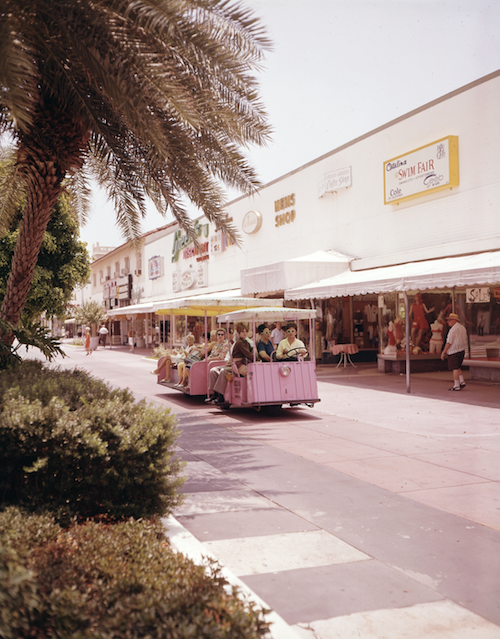
of Florida, Florida Memory.
In the early 1980s, Lincoln Road was desolate. Vacant signs were on nearly every storefront window and Miami Beach had to strategize a plan to end the economic downturn. In 1986, the arts became the saving grace and sought-after solution: the Colony Theatre was renovated and re-opened its doors to the public. That summer, the Miami City Ballet opened its studio on Lincoln Road. Passers-by could watch Edward Villella’s Miami City Ballet dancers rehearse in the storefront windows. Then in the Fall, Miami Dade College Art classes opened at the South Florida Arts center. They offered jewelry-making, porcelain painting, printmaking, painting, drawing, ceramics, and photography. A six-week tuition went for the reasonable price of $50. Between theater, dance, and art, Lincoln Road began to shape its future success.

South Florida Arts Center (now known as Oolite Arts) was a monumental game-changer for Lincoln Road. They set out to create an affordable colony for artists. The center rented about 20 stores – enough to house 40 artist residents. Efforts to lure art collectors to Miami Beach were an initial challenge: Miami Beach was perceived as infamous by many at the time, and it took significant energy to change the overall perception.
“When I first moved here, people would say “you’re working in Miami Beach? Is that safe?” … “Breaking down the resistance is hard, but I think we’re beginning to do it. For me, it’s happening because the area is lively and something is going on.” said Trixie Ingram, one of the first artists to open a studio on Lincoln Road. “Shops are opening and people are trying new things. It’s an intellectual revival, a social revival, but I don’t think it’s yet a commercial revival.”
The affordable Miami Beach rental prices of the 1980s attracted artists into the area, many of whom were priced out of places like Coconut Grove. Miami Beach became an eclectic, cultural melting pot. Ellie Schneiderman, who was the director of the Arts Center stated: “The difference in Lincoln Road now is not only in numbers — there’s a lot more people walking around, a mixture. The elderly, the yuppies, and the punks are all here.”
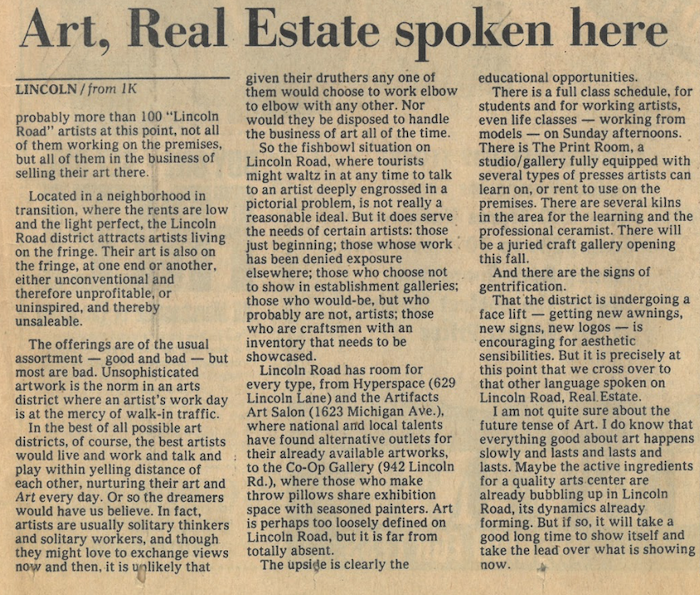
The blossoming of an arts district would breathe life into the western parts of the mall – the 800, 900 and 1000 blocks bounded by Meridian and Lenox Avenue.
“The vacancy rate has plummeted from 30% to 5%, generating more than $200,000 a year even more in rents even at reduced rates for artists. More than $50,000 in private donations have been plowed into the area, as well as $239,000 in federal community development funds funneled by the grateful city.” — Miami Herald 1987
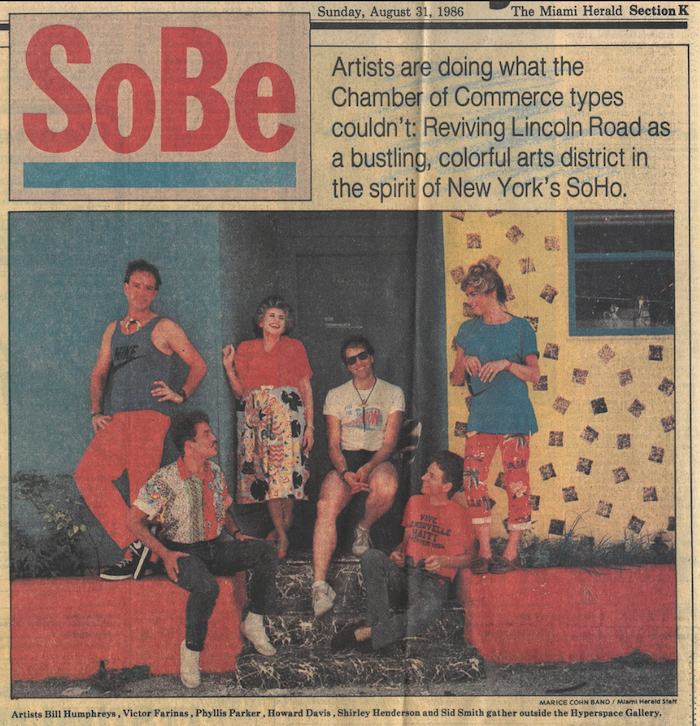
By 1988, the Arts Center doubled its artists and the number of studios at the west end of a once-barren Lincoln Road Mall. By 1989, the New World Symphony took over the historic Lincoln Theatre, further cementing Lincoln Road’s status as a cultural destination.
Developers also had faith in the future success of Lincoln Road: Doran Jason Group spent an estimated $2 million to rehabilitate four buildings in the 600, 700, and 800 blocks of Lincoln Road. The group opened beauty salons, clothing stores, and restaurants.
“There is something going on in Lincoln Road Mall, on the west side of Meridian Ave. Vacant stores are being remodeled and for rent signs are not there anymore.” —David Metz, The Post July 1986
In a 1986 Miami Herald article, Stuart Rogel, Miami Beach’s economic development director, stated: “The positive publicity about the arts district is never-ending, and that publicity always reflects back on Lincoln Road, and it also reflects back on Miami Beach. It’s created civic pride, the fact that people like to point to the South Florida Art Center as something they’re doing. And it has attracted people from all over the South Florida area and really, all over the country.”
The first Lincoln Road Arts and Crafts festival happened on October 25, 1987. Over 100 craft vendors set up booths to sell their creations, along with classic car exhibits and live music. The festival was intended to breathe life back into the struggling shopping district, and it was a total success.

Over the years Lincoln Road Mall began to make a name for itself once again. By the early 2000s, Lincoln Road progressed into a leading shopping mall and internationally recognized tourist destination – and its resurgence can be traced back to a focus and appreciation for the arts.
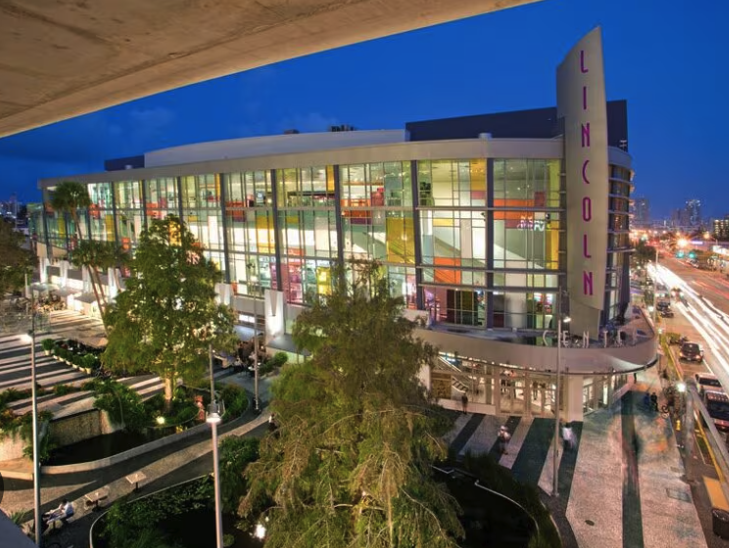
Interested in visiting Lincoln Road? Check out the Lincoln Road Business Improvement District’s website for more information.
Do you have memories you’d like to share related to this article? Contact us.
